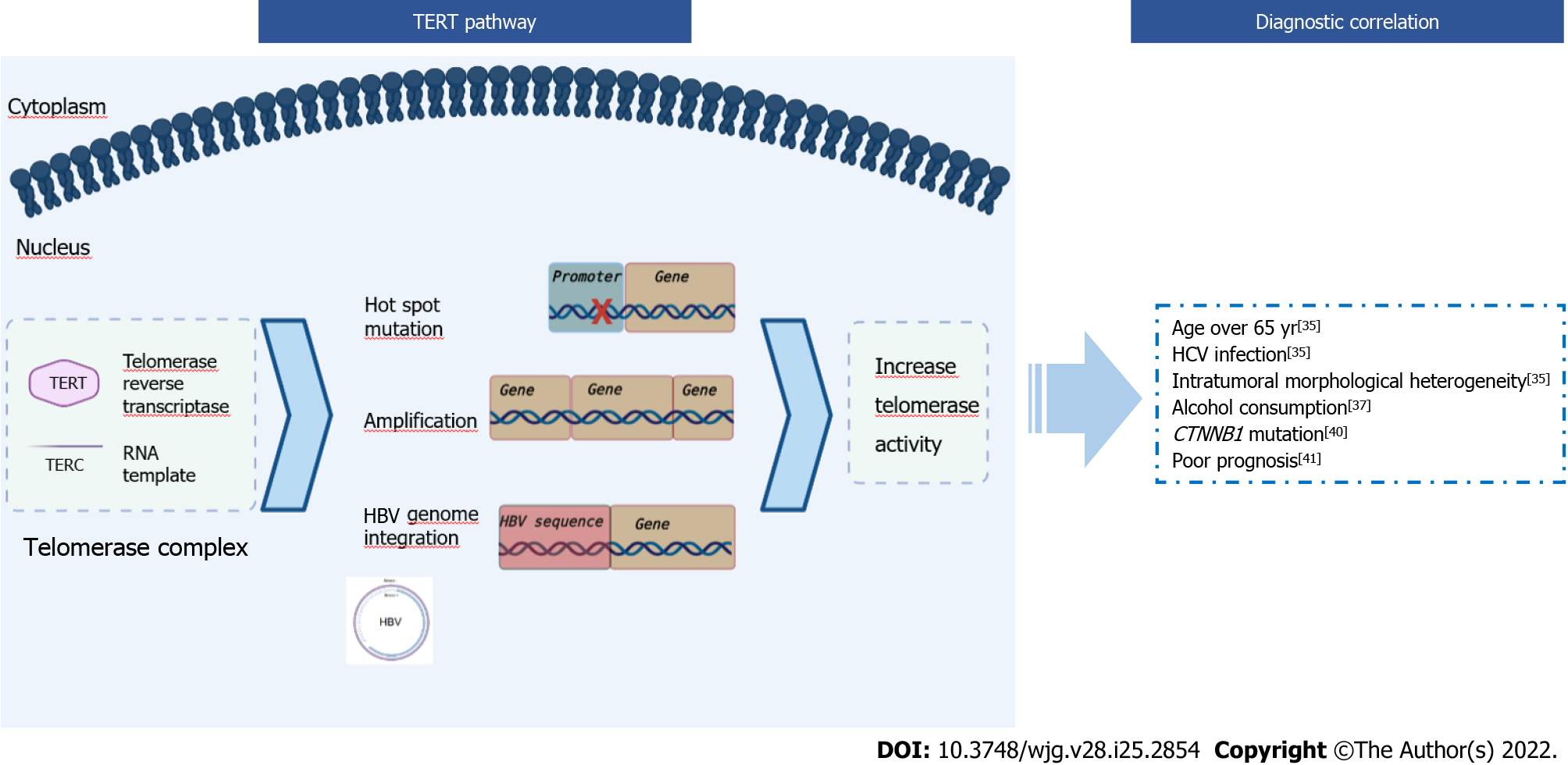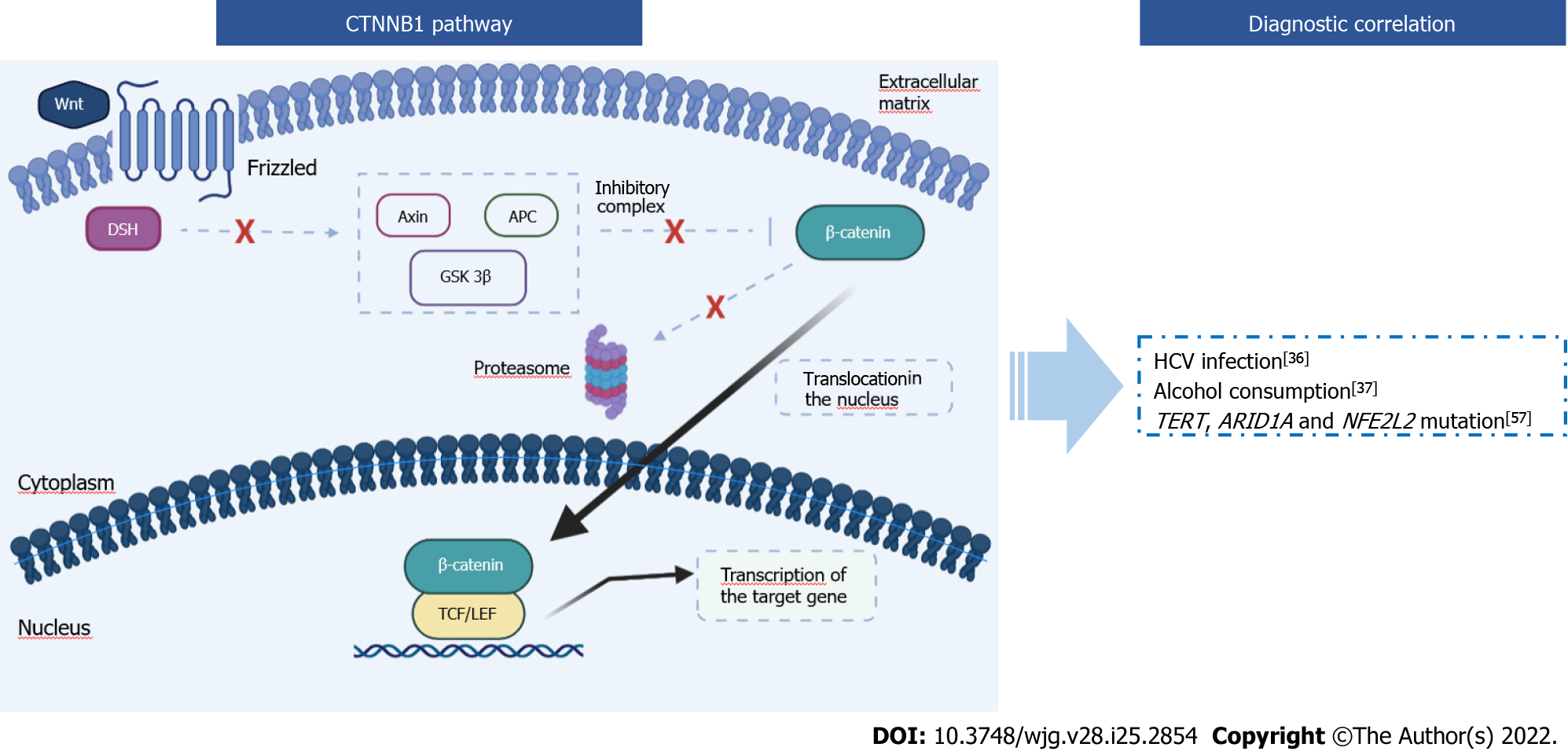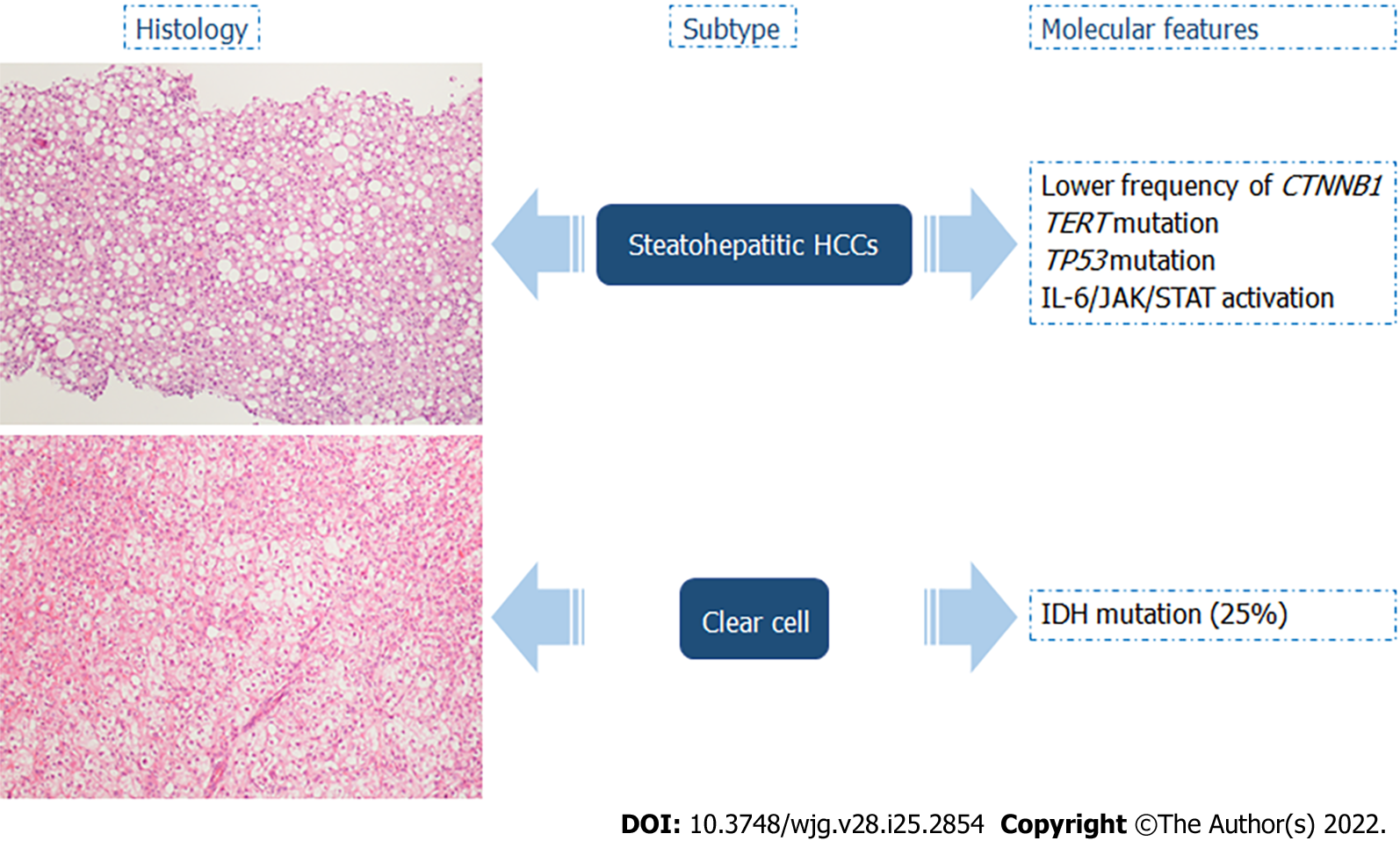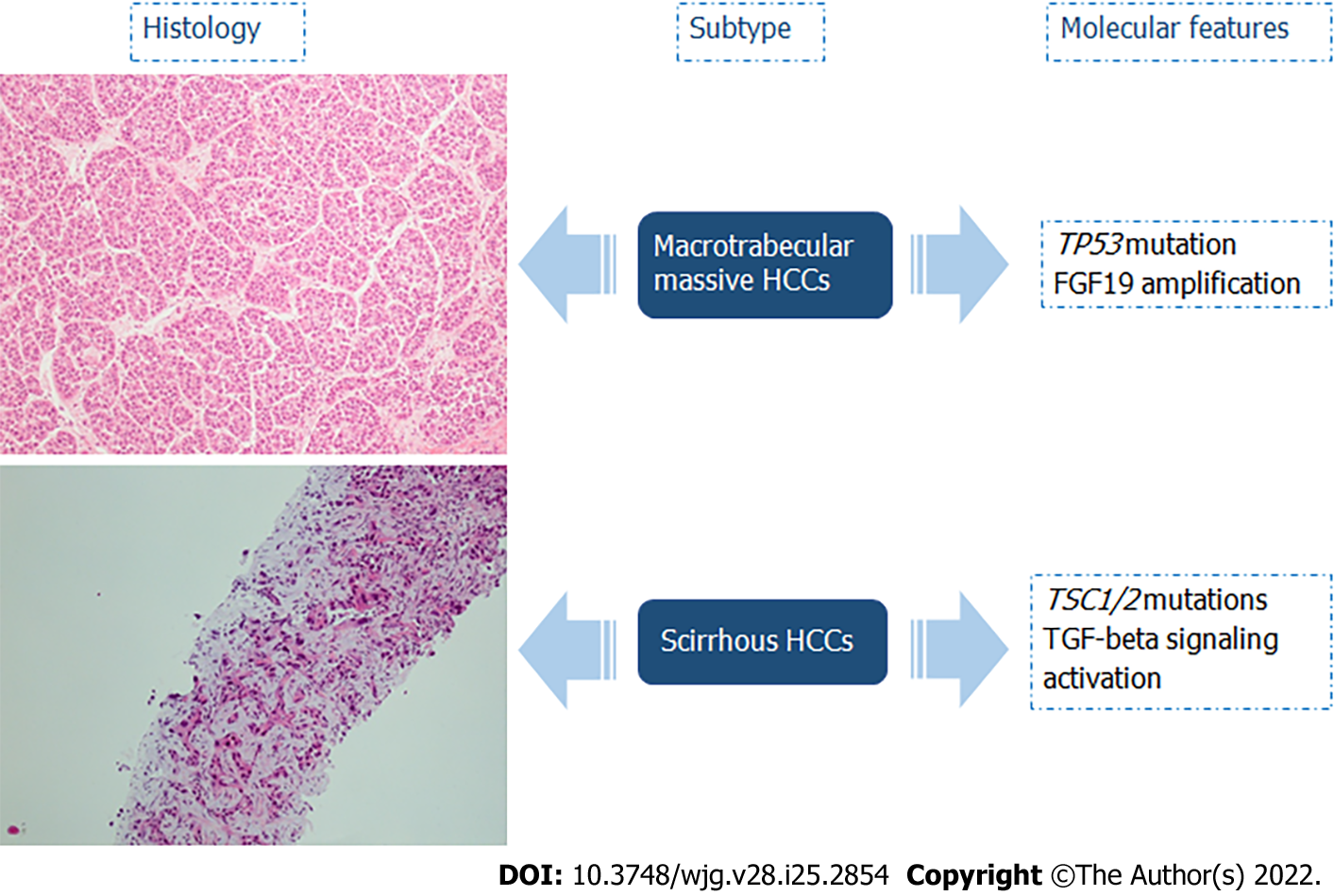Copyright
©The Author(s) 2022.
World J Gastroenterol. Jul 7, 2022; 28(25): 2854-2866
Published online Jul 7, 2022. doi: 10.3748/wjg.v28.i25.2854
Published online Jul 7, 2022. doi: 10.3748/wjg.v28.i25.2854
Figure 1 Main cellular pathways and clinical implications of TERT mutations in hepatocellular carcinoma.
Created with BioRender.com. HBV: Hepatitis B virus; HCV: Hepatitis C virus.
Figure 2 Main cellular pathways and clinical implications of CTNNB1 mutations in hepatocellular carcinoma.
Created with BioRender.com. APC: Adenomatous polyposis coli; DSH: Disheveled; GSK: Glycogen synthase kinase; HCV: Hepatitis C virus; LEF: Lymphoid enhancing factor; TCF: T-cell factor.
Figure 3 Main cellular pathways and clinical implications of TP53 mutations in hepatocellular carcinoma.
Created with BioRender.com. HBV: Hepatitis B virus.
Figure 4 Steatohepatitic hepatocellular carcinomas and clear cell carcinoma and their molecular features.
Hematoxylin-eosin stain ( 10 magnification). HCC: Hepatocellular carcinoma.
Figure 5 Macrotrabecular massive hepatocellular carcinomas and scirrhous hepatocellular carcinoma and their molecular features.
Hematoxylin-eosin stain ( 10 magnification). HCC: Hepatocellular carcinoma; TGF: Transforming growth factor.
Figure 6 Representation of our data based on the number of samples grouped according to their mutational status.
Figure 7 A case from our series of high-grade (Edmondson’s 4) hepatocellular carcinoma, with tumor giant cells and macrotrabecular architecture.
Left boxes: coexistent TERT and TP53 mutations detected by next-generation sequencing analysis; Right boxes: Hematoxylin-eosin stain ( 10 and 20 magnification). HCC: Hepatocellular carcinoma.
- Citation: Maloberti T, De Leo A, Sanza V, Gruppioni E, Altimari A, Riefolo M, Visani M, Malvi D, D’Errico A, Tallini G, Vasuri F, de Biase D. Correlation of molecular alterations with pathological features in hepatocellular carcinoma: Literature review and experience of an Italian center. World J Gastroenterol 2022; 28(25): 2854-2866
- URL: https://www.wjgnet.com/1007-9327/full/v28/i25/2854.htm
- DOI: https://dx.doi.org/10.3748/wjg.v28.i25.2854















